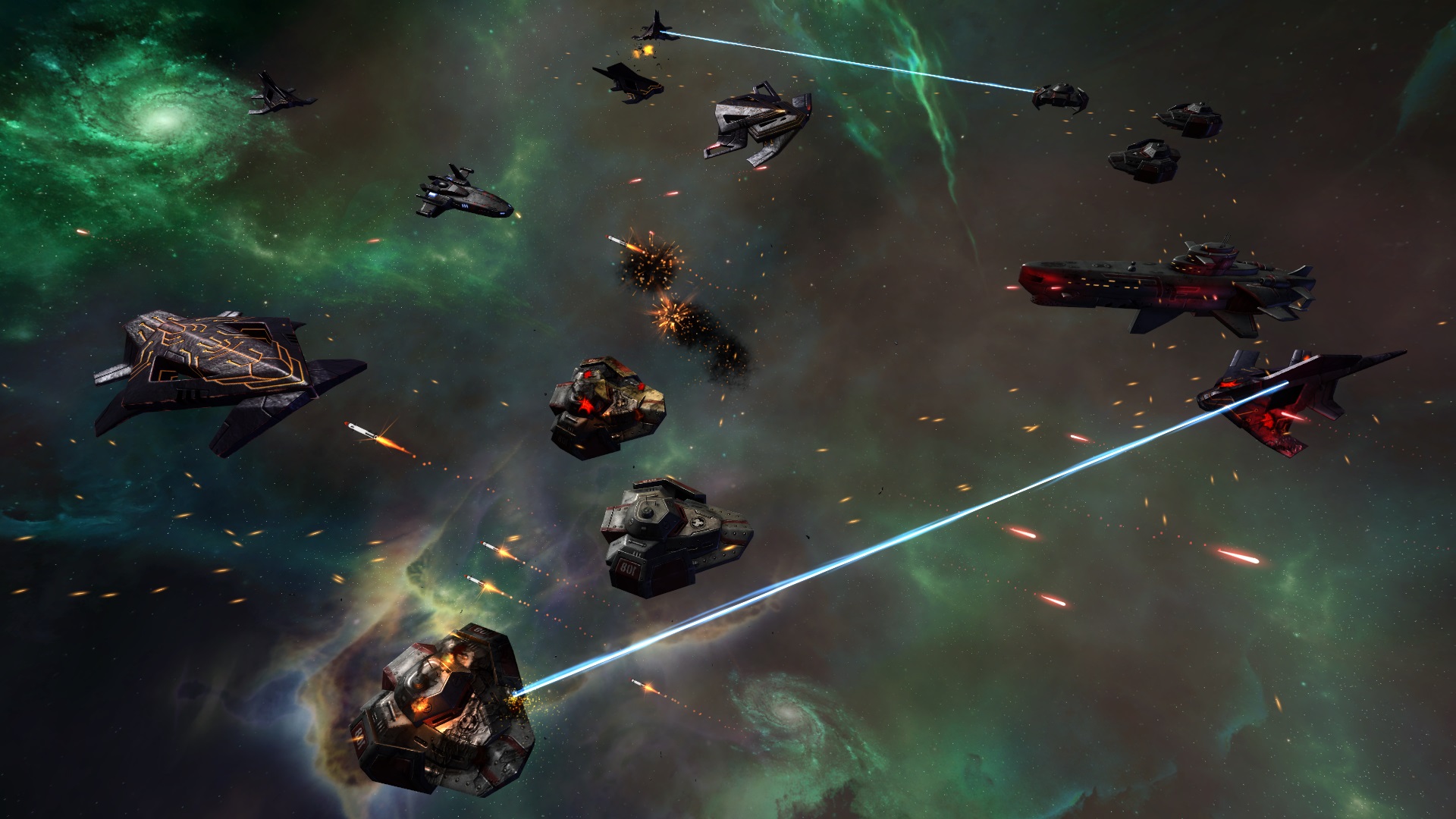
I appreciate the freedom to customise, but replacing every single piece of armour by hand can still get pretty tiresome. For those who’d rather not spend hours playing ship inventory Tetris, preset designs are available. To avoid ending up with delightfully curated space brick and breaking your poor naval commander’s heart, minimum levels of power, ammunition and thrust have to be adhered to. Beginning with basic grid-divided hull shape, it’s possible for players to pick and choose from any researched technology and design all manner of space variants. In-depth ship design returns from the original StarDrive and is just as exhaustive/exhausting (delete as applicable) as before. These ponderous capital vessels can get swifter with technological improvements, but rapidity in battle is provided by fighter supports (launched from the bigger hulls) and corvette-sized units. Just like galleons of old, you can toggle the firing mechanism on all ships to deliver broadsides rather than forward aiming.
#STARDRIVE 2 BUILD FULL#
If fleets meet in space, the game cuts away to a separate battlefield where the ships clash in the manner of a real-time strategy title.ĭespite being set in a sci-fi universe, aspects of these conflicts resemble the ship battles from the more recent Total War games (better than Rome 2 though, in case you’re worried.) Larger vessels are the equivalent of a gigantic metal space-vault full of lasers, and turn about as swiftly too.

In StarDrive 2, the game is effectively on auto-pause and only starts moving along in real time whenever you move the ‘turns’ forward by pressing (or holding down) the appropriately named Space bar. Ships and fleets out in the great strategic map of space would do battle if their paths crossed. The first StarDrive had a real-time universe, in which time ticked around constantly unless you stepped in to make use of the pause button. When presented with a scepter-wielding science elephant, I am going to hire him every single time.


 0 kommentar(er)
0 kommentar(er)
